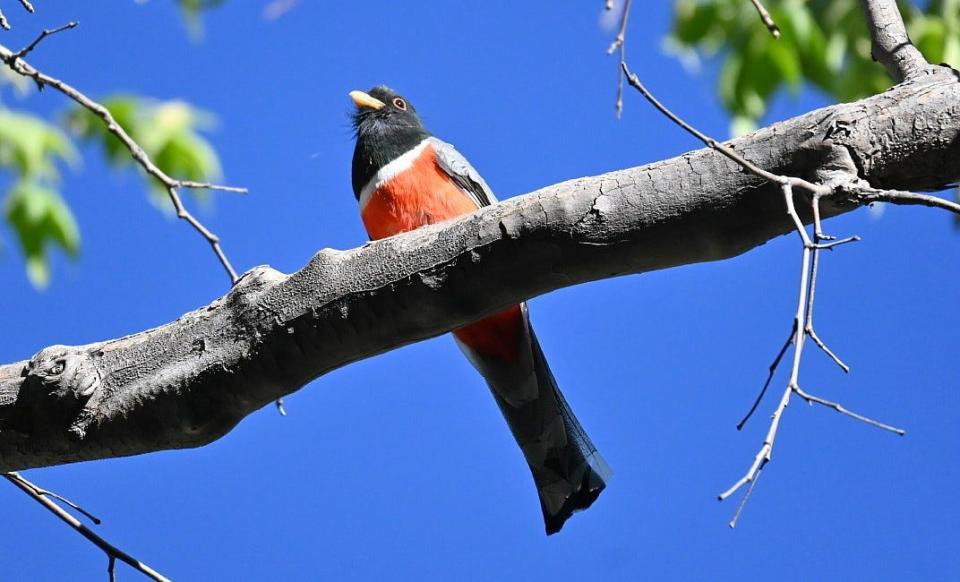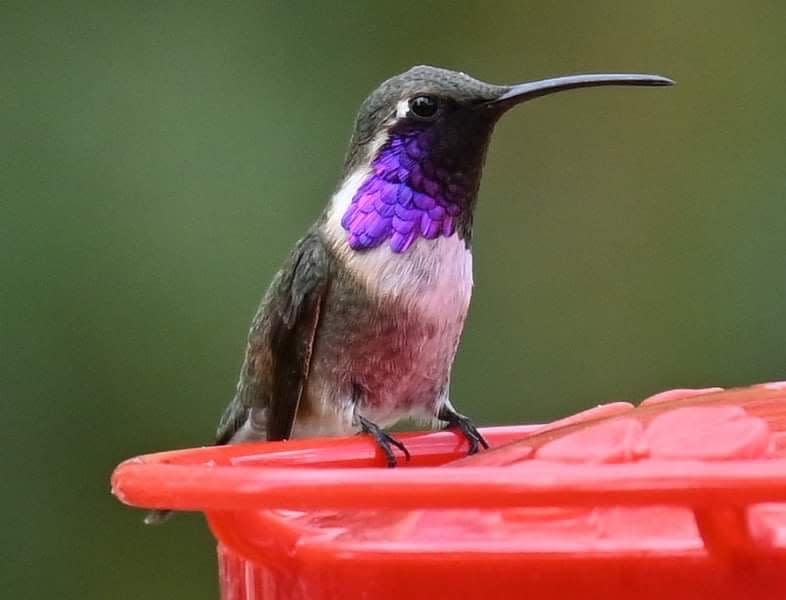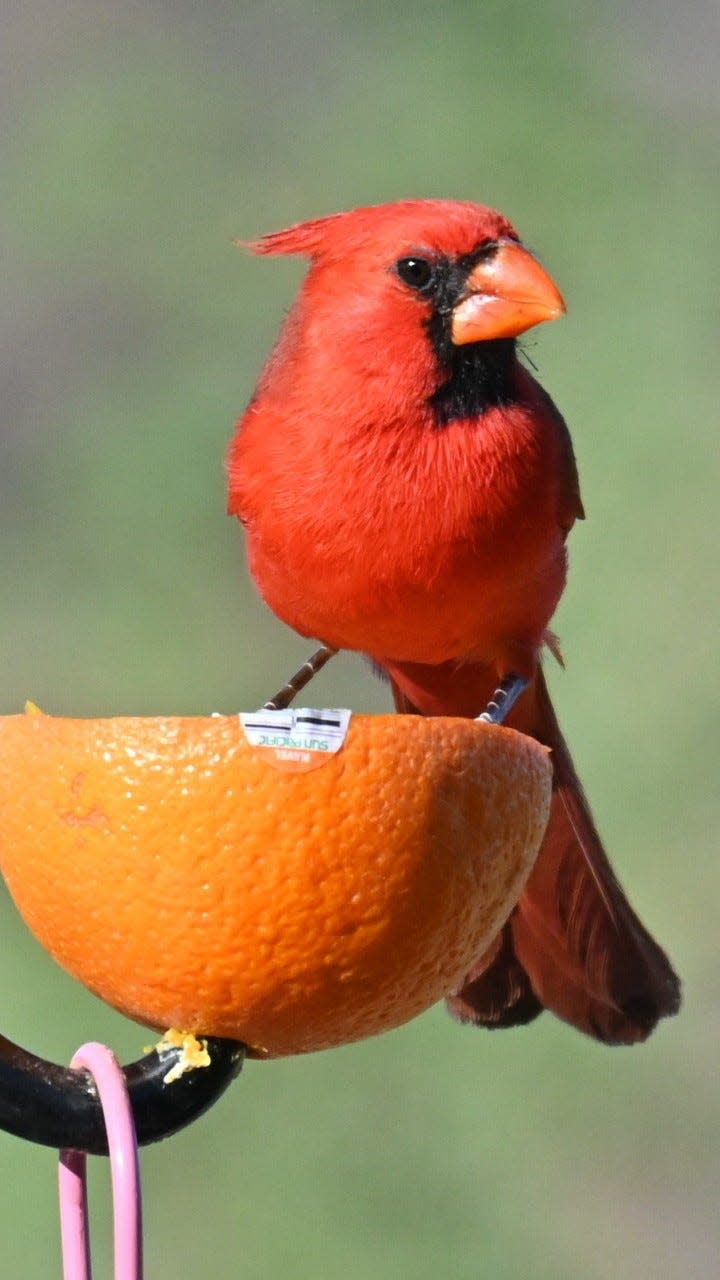TV treasure hunter Tim Saylor spends time spotting birds in Johnson County

When Tim Saylor came to Iowa City to visit his mother, Dixie, last month, the co-star of National Geographic's hit show “Diggers” wasn’t concentrating on what was beneath his feet, but on what was in the sky.
And in the bushes and trees.
Birdwatching is Saylor’s passion of late, though treasure hunting, digging into the past and bringing history to the surface, is his occupation of choice. His wife, Carlotta, is an avid birdwatcher, too, and enjoyed traveling around Johnson County and getting to know where Saylor grew up.
Gardeners depend greatly on the bird population to keep the plants free of insects and rodents. Birds are instrumental in the propagation process and seed dispersal. If you have found a surprise plant blooming in your garden, you can bet a bird helped.
Of course, they provide wonderful color and song, too. As you get to know the birds in an area, you will learn to recognize them by their voices.
Cardinals have a sweet sound and once were used as captured songbirds. Perhaps the cawing of hundreds of crows in your trees will be nerve-jangling, but be respectful, as they have probably gathered for a crow funeral.
Saylor has traveled the United States and much of Europe treasure hunting with his sophisticated metal detector. His team is called ATC, the camera crew recording their finds and their fun, but his camera is also ready for an exotic bird sighting.

The week spent in Iowa City found them up at daylight and often out in the evening after the sunset. They explored Kent Park in Oxford and found the Conservation Education Center was banding birds, so they pitched in to help.
Hummingbirds are busy right now enjoying the summer flowers in Iowa. They move fast, and you need to be quick also, to catch a sighting.
We think of them as summer visitors who power up for their long journey south. However, some are permanent residents in the deserts and particularly in Mexico. The colorful Lucifer Hummingbird likes the southern weather best.

Though finding exotic and rare birds is always a thrill for Saylor, he was enjoying our Iowa specialties, such as the Goldfinch, Red Headed Woodpeckers, feisty Blue Jays, and the Northern Cardinal.
Northern Cardinals can be seen in many states from Maine to Texas to Arizona and California. In the 1700s, they were introduced in Bermuda.
Cardinals stay all winter here in Iowa and one wonders how they keep warm. They tense up their muscles and they shiver. Like many winter birds, they can reduce their body heat a few degrees when the weather is very cold.

While in Iowa City, Saylor and his crew went out looking for a Bob-o-Link. It has become somewhat rare as the change in their habitat has reduced nutrition. They get their name from the male who flies across fields and meadows, warbling as he goes.
Tim Saylor has written a book, “Treasure Hunting with Team ATC." It is full of anecdotes about his work and it includes, as he says, “a unique ride through the world of treasure hunting and U.S. history.”
It seemed to me that he is surprised about this new interest in bird hunting, as treasurer hunting has him keeping his eye on the ground. However, his enthusiasm for the sport and the mountain of pictures he has taken just may lead to another book.
This article originally appeared on Iowa City Press-Citizen: TV treasure hunter Tim Saylor spends time spotting birds in Iowa City

